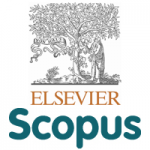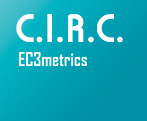S. Ignatius vulneratus et conversus est. Los tipos iconográficos ignacianos de la herida y la conversión en sus fuentes literarias y gráficas / S. Ignatius vulneratus et conversus est. Ignatian Iconographic Types of the Wound and Conversion in their Literary and Graphic Sources
Resumen
ABSTRACT: The cycle that narrates the process from the wound to the conversion of Ignatius of Loyola had, from its origins, a decisive importance for the Society of Jesus, since it was understood as the second birth of its founder. The genesis of the three iconographic types that form this cycle —Vulneratur, Sanatur à S. Petro and Legit libros pios— must be sought in the Vita written by Pedro de Ribadeneyra (1572) and in its subsequent graphic dissemination in the works of Pieter Paul Rubens (1609) and the Galle brothers (1610). After the canonization of St. Ignatius, Jesuit residences were filled with pictorial series that, in many cases, included representations of these iconographic types, which sought to spread devotion of the saint and depict him as a model to imitate.
KEYWORDS
Ignatius of Loyola; Wound in Pamplona; Apparition of Saint Peter; Conversion; Pieter Paul Rubens; Theodoor Galle; Hieronymus Wierix; Iconography; Society of Jesus; Baroque.
RESUMEN: El ciclo que narra el proceso de la herida a la conversión de Ignacio de Loyola tuvo, desde sus orígenes, una destacada importancia para la Compañía de Jesús, pues supuso el segundo nacimiento de su fundador. La génesis de los tres tipos iconográficos que componen este ciclo —Vulneratur, Sanatur à S. Petro y Legit libros pios— hay que buscarla en la Vita escrita por Pedro de Ribadeneyra (1572) y en su posterior difusión gráfica a través de las obras de Pieter Paul Rubens (1609) y los hermanos Galle (1610). Tras la canonización de san Ignacio, los domicilios jesuíticos se llenaron de series pictóricas que, en muchos casos, incluían representaciones de estos tipos iconográficos, las cuales buscaban propagar la devoción por el santo y mostrarlo como modelo a imitar.
Palabras clave
Texto completo:
PDFEnlaces refback
- No hay ningún enlace refback.
URL: http://ojs.uv.es/index.php/IMAGO
Administración: C/ Universitat, 2 · 46003 Valencia.
M.Elvira.Mocholi@uv.es, Elena.Monzon@uv.es, mahiques@uv.es
ISSN digital: 2254-9633 / ISSN impresión: 2171-0147
MÉTRICA EN SJR BASADA EN SCOPUS
INDEXACIÓN






![]()







